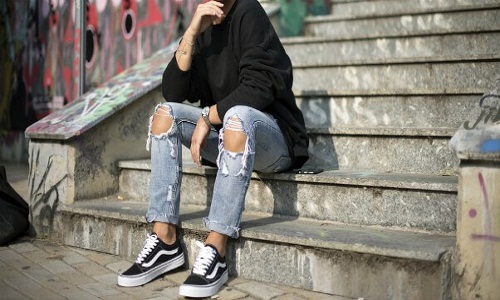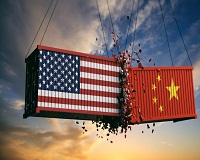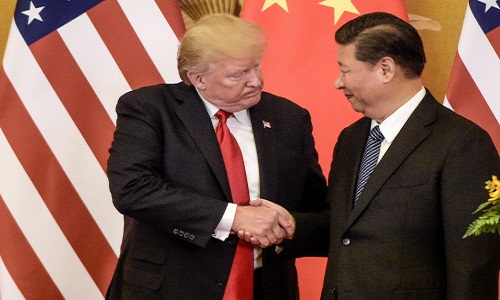FW
Invista will add to its nylon 6,6 polymer capacity in China. The plan is to add 40,000 tons of nylon 6,6 polymer capacity. The current capacity is 1,50,000 tons. US-based, is a chemical intermediates, polymers and fiber business. Construction is targeted for mid-2019 and production is set to begin in 2020.
Invista has additional plans. These include: a new adiponitrile (ADN) plant for China by 2023 as well as additional ADN capacity resulting from retrofits of Invista’s latest ADN technology in France by 2019. ADN expansion is also a theme at Invista’s plant in Texas, where additional capacity will be introduced by 2020.
Adiponitrile, an organic compound, is an important precursor to the polymer nylon-6,6. The company is continuing to make strategic investments to best meet customers’ needs. The forecast for the future growth of the nylon 6,6 polymer market sees an increased demand in Asia and Invista is expanding its capacity to meet that demand.
With leading brands including Lycra, Coolmax and Cordura, Invista is one of the world’s largest integrated producers of chemical intermediates, polymers and fiber. The company’s technologies for nylon, spandex and polyester are used to produce clothing, carpet, air bags and other everyday products.
Australian designer Tess Whitfort has won the Redress Design Award showing her sustainable collections on the runway in Hong Kong. Her collection is inspired by punk and counterculture. She takes elements of grungy, rebellious style and mixes them with a bit of elegance and refinement. She has a holistic approach. She examines every element of her collection through the sustainability lens. She uses deadstock linen, eco-friendly screen print inks, and upcycled metal hardware. But she is known for highly complex zero waste patterns.
She believes aesthetics matter. If a garment is not beautiful, desirable, cool, covetable, there’s no point. But she also has a strong focus on sustainability. Traditionally, the designer’s role has been to create a beautiful garment or collection, perhaps taking it one step further to imagine a customer wearing it. It is not yet the norm for designers to consider what happens to a garment after its first owner tires of it.
Yet up to 80 per cent of a product’s environmental impact is decided at the design stage. Designers have enormous power to look beyond aesthetics in order to green fashion. That’s vital in the context of the industry’s current waste crisis. Out of the 53 million tons of material used for clothing production every year, 87 per cent is landfilled or incinerated after its final use.
"Streetwear has been constantly evolving and shaping the fashion industry in unexpected ways. Offering something for everyone; from high to low, casual to chic, streetwear is an important segment of fashion business today. For example, the market for US urban streetwear in 2015 was valued at about $80 billion by Statista. And a study by Bain & Company last October revealed, high-end streetwear helped boost global sales of luxury brands by 5 per cent. A takeaway from the sportswear segment, streetwear is the favourite buzzword in fashion today. From heritage houses to fast-fashion brands, retailers and big-budget investors, everyone wants has a stake in steetwear. Almost half a century old and hyper commercialised, street fashion is all about youth culture in its truest form and youth culture sells. In fact, its global mainstream dominance has democratised the entire fashion system."
 Streetwear has been constantly evolving and shaping the fashion industry in unexpected ways. Offering something for everyone; from high to low, casual to chic, streetwear is an important segment of fashion business today. For example, the market for US urban streetwear in 2015 was valued at about $80 billion by Statista. And a study by Bain & Company last October revealed, high-end streetwear helped boost global sales of luxury brands by 5 per cent. A takeaway from the sportswear segment, streetwear is the favourite buzzword in fashion today. From heritage houses to fast-fashion brands, retailers and big-budget investors, everyone wants has a stake in steetwear. Almost half a century old and hyper commercialised, street fashion is all about youth culture in its truest form and youth culture sells. In fact, its global mainstream dominance has democratised the entire fashion system.
Streetwear has been constantly evolving and shaping the fashion industry in unexpected ways. Offering something for everyone; from high to low, casual to chic, streetwear is an important segment of fashion business today. For example, the market for US urban streetwear in 2015 was valued at about $80 billion by Statista. And a study by Bain & Company last October revealed, high-end streetwear helped boost global sales of luxury brands by 5 per cent. A takeaway from the sportswear segment, streetwear is the favourite buzzword in fashion today. From heritage houses to fast-fashion brands, retailers and big-budget investors, everyone wants has a stake in steetwear. Almost half a century old and hyper commercialised, street fashion is all about youth culture in its truest form and youth culture sells. In fact, its global mainstream dominance has democratised the entire fashion system.
Growing popularity, lucrative for business
Streetwear category, which started decades ago, is now witnessing a huge growth, despite the advent of many new players, luxury collaborations, and high-end designers. Today, as everyone aspires to look unique and exclusive, streetwear caters to their needs by offering limited drops or releases by reputed brands like Nike, Supreme and Johnny Cupcakes
new players, luxury collaborations, and high-end designers. Today, as everyone aspires to look unique and exclusive, streetwear caters to their needs by offering limited drops or releases by reputed brands like Nike, Supreme and Johnny Cupcakes
The popularity of streetwear can be gauged from the fact that Supreme that started out as a skate brand in New York and never held a runway show, won the CFDA Menswear Designer of the Year Award last June. In fact, the brand’s recent sale saw jackets, sweatshirts, and the coveted Madonna “Justify My Love” T-shirt sell out in seconds. The Madonna tee retailed on Supreme’s site for $48, sold out in all colorways, and was reselling later that day for $250 on StockX, the ecommerce resale marketplace. And as retail analyst and insights director of Edited Katie Smith point out, the shift toward more comfortable and functional clothing has led to an increase in activewear as a trend. But with a saturation point in activewear, consumers went looking for the ‘new cool’ and turned to the street. She says streetwear has a similar casual aesthetic, with a wider and less sporty silhouette.
In India, the popular ‘street’ brands are fairly new not more than five years old. These include: Noughtone, Sahil Aneja, Huemn or Theorem. Being fairly new incumbents, these brands are yet to make a mark and will take a long time for them to shake the designer fashion system that continues to be dominated by ethnic wear designers. However, top designers are incorporating street influences to give a fresh spin to their work. For example, designer Narendra Kumar went all out on sport influences, using ‘fakes’ as the main theme for his last collection. Similarly, more traditional Indian wear labels like Ritu Kumar and Anita Dongre, embraced sporty accessories like elongated belts on saris and bum bags and sneakers with everything in collections.
Cotton the preferred fabric
A number of brands incorporate a significant amount of cotton into their streetwear offerings. However, the Supreme Fall/Winter collection also included denim, a cotton corduroy shirt with flannel hood, printed and oxford button-front cotton shirts, and cotton twill shirts and pants. The brand prefers to stick to natural fibres.
The Yeezy collection of luxury labels Kanye West has also been cotton-rich from the beginning. The Kanye and Adidas Originals Yeezy Season 1, launched in February 2015, featured high-priced, oversized jackets, sweatshirts, sweaters, and leggings. According to Monitor Survey, around 92 per cent of consumers prefer clothes made from natural fibers like cotton and 66 percent of them willing to pay more for them.
Adding luxury to streetwear
In recent years, luxury labels like Gucci and Burberry have joined the category. Other labels like Louis Vuitton are also adding streetwear designers to their brand. There are loads of collaborations happening at the highest levels like Adidas Originals by Alexander Wang, Topman x Vision Streetwear, Off-White, and Jimmy Choo. This mixing of high and low brands and price points is been done with great effect. These collaborations lend a taste of luxury to shoppers without harming the reputation of the designers. Luxury labels will continue to offer streetwear because that’s what the consumer wants, bringing their designers recognition among these young buyers.
"The escalating US-China trade war is driving many China-based manufacturers and their US clients out of China to other low-cost countries like Vietnam, Cambodia, etc, leather brand Steve Madden is shifting handbag production to Cambodia, Techtronic Industries is moving out to Vietnam while Flex is planning to shift production centres from Mexico to Malaysia. The US has so far levied 25 per cent tariff on $50 billion Chinese industrial goods and is planning to levy tariffs on another $200 billion Chinese exports. It has excluded most consumer goods from the tariff lists, yet many manufacturing and retail executives fear the range of affected products could widen with both Beijing and Washington refusing to concede."
 The escalating US-China trade war is driving many China-based manufacturers and their US clients out of China to other low-cost countries like Vietnam, Cambodia, etc, leather brand Steve Madden is shifting handbag production to Cambodia, Techtronic Industries is moving out to Vietnam while Flex is planning to shift production centres from Mexico to Malaysia.
The escalating US-China trade war is driving many China-based manufacturers and their US clients out of China to other low-cost countries like Vietnam, Cambodia, etc, leather brand Steve Madden is shifting handbag production to Cambodia, Techtronic Industries is moving out to Vietnam while Flex is planning to shift production centres from Mexico to Malaysia.
The US has so far levied 25 per cent tariff on $50 billion Chinese industrial goods and is planning to levy tariffs on another $200 billion Chinese exports. It has excluded most consumer goods from the tariff lists, yet many manufacturing and retail executives fear the range of affected products could widen with both Beijing and Washington refusing to concede.
Emergence of new lucrative markets
The manufacturing industry needs to come up with strategies to diversify this risk. Factory owners in China are already shifting production to other developing countries such as Bangladesh, Cambodia and Vietnam over the past decade in search of cheaper wages and a hedge against the political and economic risk that comes from reliance on one country. The trade war will further intensify this shift.
developing countries such as Bangladesh, Cambodia and Vietnam over the past decade in search of cheaper wages and a hedge against the political and economic risk that comes from reliance on one country. The trade war will further intensify this shift.
Vietnam has been at the centre of many companies’ ‘China plus’ manufacturing strategies in recent years, attracting investments from the companies like Samsung, the South Korean electronics group, Daikin, the Japanese air conditioning group, and Techtronic. Many US and European apparel fashion brands have shifted their production to Vietnam with a just few spare facilities left in China.
China retains its dominant position
Though tariffs and the uncertain future of US-China relations have unnerved many manufacturers, China is still likely to retain its dominant position. According to WTO, the country still accounted for 35 per cent of global clothing exports last year, compared with just 6.5 per cent from Bangladesh, 5.9 per cent from Vietnam and 1.6 per cent from Cambodia. It is in a similar position for office and telecoms equipment.
Retailers to bear the brunt
Although the onus of paying tariffs will officially fall on the US importers of the affected products, the entire supply chain from consumers to the Chinese factories are likely to be affected. According to Panjiva, a research unit of the credit rating agency S&P, of the 200 US companies that are depending on these tariffs for their main earnings, only 47 per cent plan to raise prices for consumers.
Also the percentage by which these prices are likely to rise is comparatively lesser as tariffs are charged on wholesale import prices, before retail mark-ups. As Edward Rosenfield, CEO, Steven Madden notes retail prices would need to rise by only 3.5 per cent to offset a 10 per cent tariff. But retailers are unlikely to pass on this cost to consumers; affecting their own profit margins in the bargain.
The EU Ecolabel promotes products that have a low environmental impact across their entire life cycle - from extraction of raw materials, to manufacturing and packaging, use, and finally disposal or recycling. Developed by the European Commission in 1992, the EU Ecolabel features a green flower surrounded by 12 blue stars. Its main objective is to educate and guide consumers to choose environmentally conscious products. Close to 70,000 products bear the logo.
Virtually every product that is manufactured for distribution, consumption or use in the EU market is eligible for the EU Ecolabel. Focusing on the part of the process where the product has the highest environmental impact, the EU Ecolabel product-specific criteria ensures that any product bearing the EU Flower has passed the most stringent environmental tests. The product’s impact on the environment, biodiversity, energy and resource consumption, waste generation and emissions are examined.
Because of its size and scope, the textile industry is one of the biggest greenhouse gas emitters on earth. Textile products have a great environmental impact—they use large quantities of water and pesticides to grow cotton, use water in natural fiber production, create emissions stemming from producing synthetic and cellulosic fibers and use non-renewable resources for synthetic fibers.
Intradeco Apparel has been given the Repreve®'s Champions of Sustainability Award. The award recognises the company’s efforts towards sustainability and environment protection. The company, by partnering with Unifi and incorporating REPREVE®, one of the most trusted, traceable fibers, has produced over 6 million garments that have been sold in Walmart stores over the last decade. It has diverted over 50 million plastic bottles from landfills and oceans over the last 10 years, helping to mitigate the volume of plastic that threatens the future of our ecosystems.
For Intradeco Apparel, sustainability has always been the topmost priority. Repreve enabled Intradeco offers a wide array of performance quality garments to major retailers across the US, like Walmart, and in multiple brands such as Works, Russell and Swisstech, etc. Intradeco has employed eco-friendly practices including maintaining energy-efficient manufacturing facilities, using renewable energy through the use of solar panels and utilising sustainable packaging materials.
RadiciGroup will participate in the 57th edition of Global Fiber Congress (GFC), the international meeting on innovation in fibres that takes place in Dornbirn, Austria. The company will launch the RadiciGroup Performance Yarn Business Area that offers a range of yarn increasingly in line with market needs. The products on display include: PA 6 and PA 6.10 BCF yarn, which blend lightness, durability, design, sustainability and reduced costs to meet the requirements of new trends.
These tufted carpets are the best solution for the automotive industry, because they ensure quality, performance and easy maintenance with remarkable cost efficiency
About 700 specialists from 30 countries are participating in GFC to being held from September 12-14, 2018. The event will have over 100 lectures that will ponder over the situation in the evolving fibre world, with particular emphasis on the topics of the circular economy and sustainability. Participants will also have the opportunity to explore special areas of application more in depth, for instance, the automotive sector.
The third edition of Centrestage held in Hong Kong from September 5 to 8 attracted 8,700 buyers, a 2.4 per cent increase since last edition. The tradeshow, attracted buyers from over 80 countries including Canada, France, Germany, India, Korea, Russia, Taiwan and the United Arab Emirates increasing in numbers significantly. Centrestage is one of Asia’s largest apparel and accessories tradeshows.
Buyers from Asia accounted for 35 per cent. This year's Centrestage attracted many global brands and buyers. An increased number of overseas buyers came looking for business opportunities and talents, which solidified Hong Kong’s position as Asia’s fashion capital. Three thematic zones showcased 230 brands from 22 countries and regions. The event also presented some 40 activities over its four-days, including more than 20 fashion shows.
Japanese street wear label Facetasm, Hong Kong women’s wear label Idism and Chinese luxury label Ms Min presented their latest 2019 spring/summer collections. Moreover, 13 new designer brands showed their 2019 spring/summer collections. Other collections were also showcased by local established brands including Dorian Ho, Artistic Palace, Harrison Wong, House of V, and Loom Loop. The industry is cautiously optimistic about sales in the coming year.
Centrestage was organised by the Hong Kong Trade Development Council.
The textile industry in Pakistan suffers due to lack of basic working capital. The industry wants a policy for clearing pending refund claims within a stipulated period. At one time, authorized dealers could send advance payments up to $10,000 per invoice for import of all eligible items without the requirement of letter of credit or bank guarantee to suppliers aboard.
This facility has been withdrawn and this has affected export-oriented industries, creating hurdles in meeting on-time export commitments while increasing the cost of doing business. The value-added garment sector has grown 11.22 per cent in 2017-18 despite internal and external challenges. The value-added garment sector is a major tax payer, the largest employment generator in the whole textile chain and exports worth $5.5 billion.
One suggestion is a one window operation could replace the lengthy procedure that involves interaction of manufacturers with various agencies. Another is social security and all other taxes should be merged and deducted at source. The feeling is the exchequer will receive more revenue if a reasonable percentage of realized amount is deducted. Also many small and medium enterprises will be added in the tax net automatically.
During the 2017-18 season, cotton acreage in Punjab stood at 2.91 lakh hectares as against the initial figures of 3.82 lakh hectares. However, higher productivity saw the state produce 11.5 lakh bales. Cotton is sown over nearly 110 lakh hectares across India.
Rates of raw cotton opened strong in most markets in Punjab as harvest of the state’s second biggest kharif crop started in the first week of September. Farmers are getting about Rs 5800 per quintal for their produce.
The strong market is expected to continue for about two months. The MSP of medium staple cotton, grown in Punjab, is fixed at Rs 5,350 per quintal this year, up from Rs 4,220 per quintal in the last kharif marketing season. Higher rates for the produce are likely to give better returns to farmers. A higher yield of crop is expected this season as compared to 2017-18. The buoyancy in rates is expected to remain at least till Diwali or till the arrival of raw cotton picks up in markets across India.
Farmers in Bathinda expect a good yield of over nine quintal per acre, which earlier was nearly eight quintal per acre. The price too is expected to remain good.











